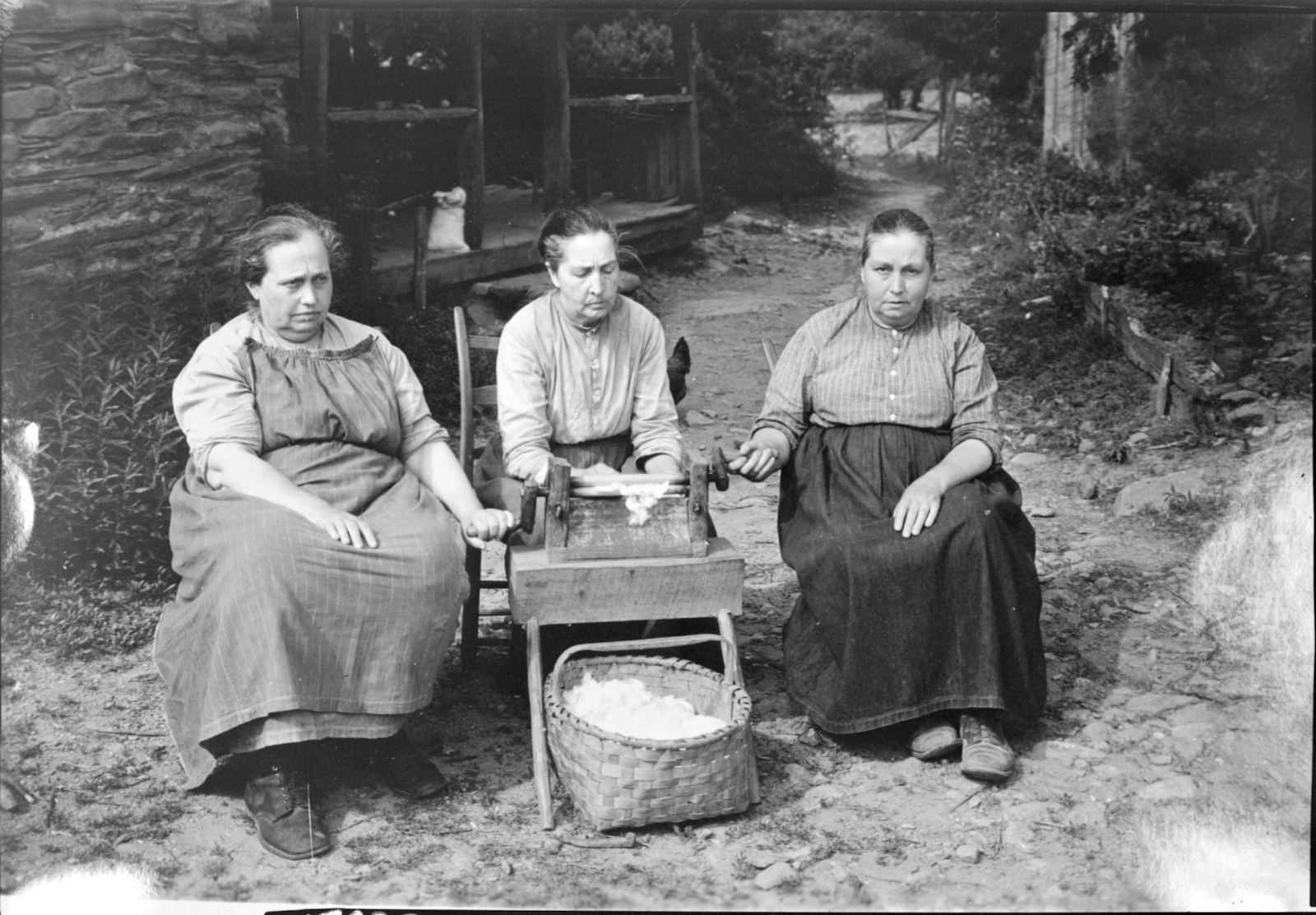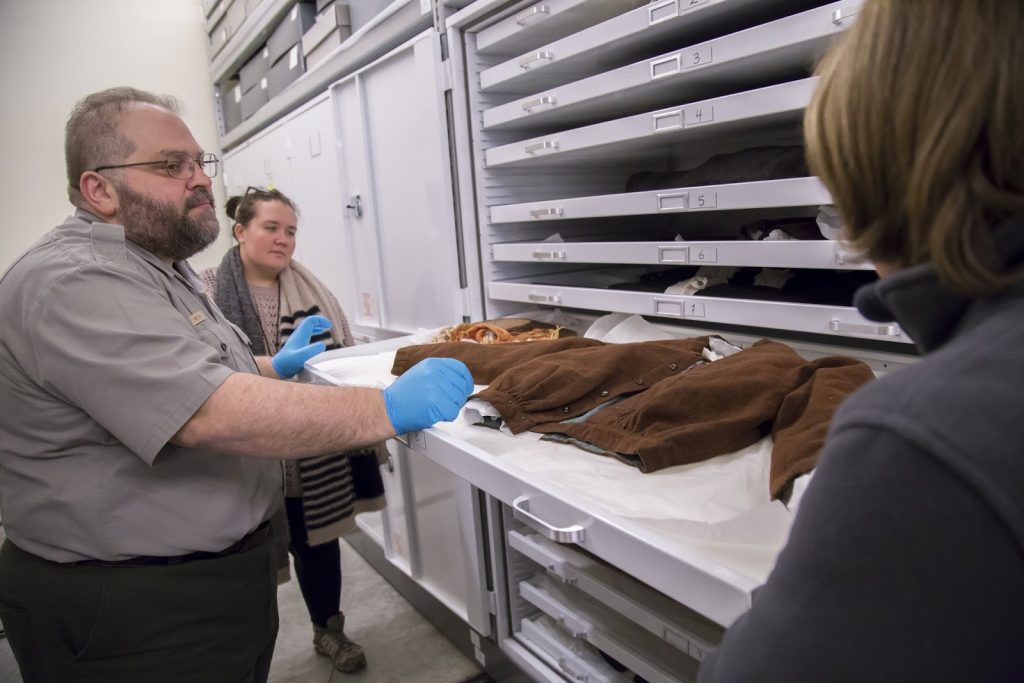
The Saturday Evening Post printed an article titled “Time Stood Still in the Smokies” on April 27, 1946. It began, “Deep in the mountains of East Tennessee, the Walker sisters are still living in the early 19th century… and finding it not so bad, either.”
The writer, John Maloney, had visited the Walker sisters, women who would live their entire lives in their family’s primitive Smoky Mountain log cabin, in the late fall. He interviewed and observed them as they prepared for winter. His story describes the Walker sisters and their chores: cutting wood for fuel, spinning cloth, making blankets, shearing sheep, and putting up preserves, things one would’ve had to do to live in Southern Appalachia in the 1800s.
When Great Smoky Mountains National Park was dedicated in 1940, the Walker sisters did not move away. They stayed put in their family’s 20-foot-by-22-foot Little Greenbrier home and received $4,750 for their land and a lifetime lease, allowing them to legally remain on the property until their death. While time might have stood still for the Walker sisters before Mr. Maloney’s story, after his article was printed, things sped up for these five ladies. In the months and years following the Post’s story, thousands of tourists would visit the Walker sisters’ home.
In her book, The Walker Sisters: Spirited Women of the Smokies, Bonnie Trentham Myers recounts that time when visitors came frequently. She wrote, “At first the sisters put up a sign saying ‘keep out,’ but when they began to sell apples, pine cones, (….) and the poems that Louisa wrote, they changed the sign to read ‘visitor’s welcome.’”
I imagine having that many visitors could be bothersome, but all these folks come a calling gave the Walker sisters an opportunity to tell their stories.
Following the death of the last sister, Louisa, in 1964, the National Park Service received the homestead. The structures remain and are located along Little Brier Gap Trail, accessible to everyone. The legacy of the Walker sisters continues through their home, their poetry, and the lives of those they touched.
As we reflect on the history of women in the Smokies, I think it’s essential to take time to learn and share one another’s stories. This month and every month you should challenge yourself to read about the legacy of mountain women, starting with Women of the Smokies. And if you know any mountain women personally, ask them to tell you their stories.
To learn more about the Walker sisters, join Great Smoky Mountains Association for a History Hike in Little Greenbrier on March 9.


Subscribe to get the latest posts sent to your email.
The Great Smokies Welcome Center is located on U.S. 321 in Townsend, TN, 2 miles from the west entrance to Great Smoky Mountains National Park. Visitors can get information about things to see and do in and around the national park and shop from a wide selection of books, gifts, and other Smokies merchandise. Daily, weekly, and annual parking tags for the national park are also available.